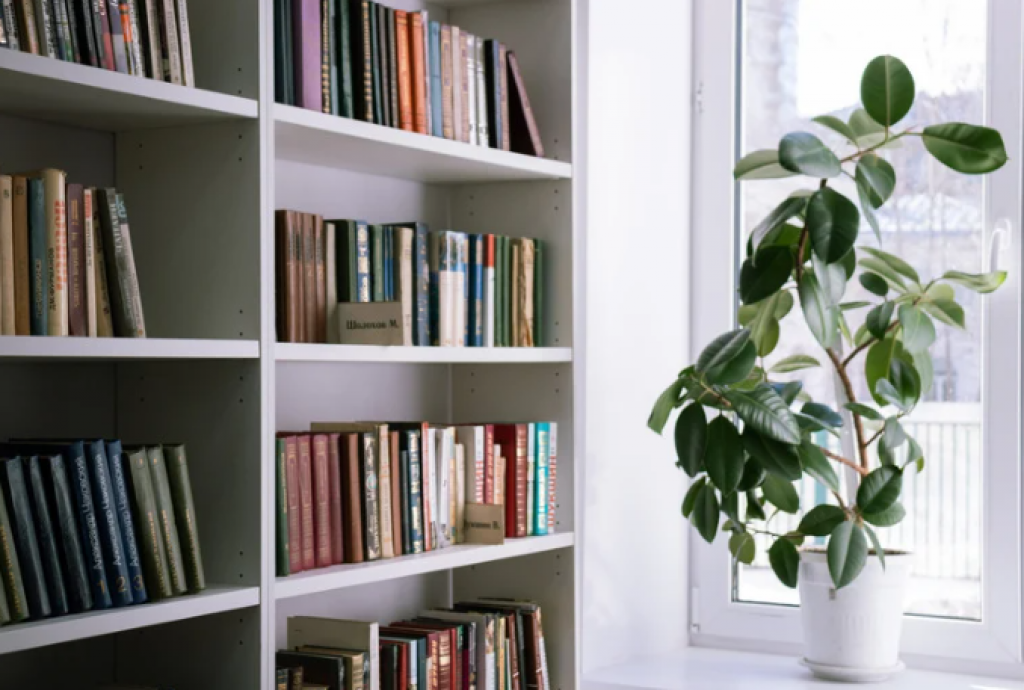
Bali’s Best Indoor Plants for Villas: Enhance Tropical Ambiance and Air Quality

Image by Alisa Fjolars on Pexels
Indoor plants are an emerging trend worldwide for decorating homes, apartments, offices, and villas. They boost air quality, enhance the room’s aesthetic, and give the occupant natural vibes.
Whether you are a plant lover or planning to plant some plants in your space, don’t worry; this article will teach you everything you need to know about selecting, caring for, and enjoying indoor plants.
Why Indoor Plants Matter
Indoor plants are more than decorative plants. In addition to adding a natural touch to the room, they offer various health benefits, including natural air purification.
Plants like the Spider Plant and Peace Lily help filter out toxins like formaldehyde and benzene from the air, making your home healthier. Besides, plants like aloe vera and Lavender boost mental health, reduce stress, and improve sleep quality.
Moreover, indoor plants have been shown to enhance productivity and focus, making them perfect for office spaces or home workstations. The simple presence of a plant can improve mood and create a calming environment, turning a dull room into a fresh room.
Choosing the Right Indoor Plants
Some of the indoor plants are more challenging to maintain. Here’s our recommendation tailored to your experience.
a. Low Maintenance of Indoor Plants for Beginners
If you are new to indoor plants, it is recommended that you choose low-maintenance plants. There are many choices, such as snake plants, golden pothos, Jade Plants, and Zanzibar Gems. These tough plants can survive in low light with minimal watering, making them ideal for beginners.
b. Medium and High-maintenance Plants
For those with a little more experience, plants like the Monstera, Fiddle Leaf Fig, African Violet, and Peace Lily require more attention but offer stunning rewards. High-maintenance plants, such as Orchids and Calatheas, are more challenging, needing specific lighting, humidity, and watering schedules. However, these plants' beauty and unique qualities make the extra effort worth it.
Placement Tips for Indoor Plants
Not all indoor plants, including snake and ZZ plants (Zanzibar), have to be placed near a window, as both plants can thrive under low-light conditions; others, like the Fiddle Leaf Fig, need bright, indirect sunlight to flourish.
A common mistake among plant owners is placing plants in direct sunlight, which can cause leaves to burn. Use bright, indirect light for plants that need more light, and place low-light plants in shaded areas of your home.
a. Choosing the Right Location for Your Indoor Plants
Think about adding colors to a blank space in your free space at home or office, placing an indoor plant.
It is recommended that indoor plants decorate the dining hall to enhance the natural ambiance. Living rooms are great for medium-light plants, while bedrooms can benefit from low-light options. Avoid placing plants near drafty windows, radiators, or areas with extreme temperature fluctuations, as this can cause stress to your plants.
b. Maximizing Space
A small apartment may have limited decorating space; however, this shouldn’t stop you from putting indoor plants in it. Hanging planters or plant shelves can add greenery without taking up floor space. Vertical gardening is an excellent option for those looking to make a statement with their indoor plant collection.
Care Guide for Indoor Plants
a. Watering Tips
One of the most common problems with indoor plant care is overwatering. While it’s easy to assume more water is better, overwatering can cause root rot. Always check the soil moisture before watering—if the top inch of soil is dry, it’s time to water. Plants like Succulents and Cacti need less frequent watering, while tropical plants like the Peace Lily may need more.
b. Soil and Potting
Choosing the right soil mix is essential for the health of your plants. Most indoor plants thrive in well-draining soil, which helps prevent water from pooling at the roots. When your plant outgrows its pot, repotting it into a larger container will give it room to grow and thrive.
c. Fertilizing Schedule
Indoor plants don’t need constant feeding, but an excellent fertilizing schedule can help them thrive. A slow-release organic fertilizer is perfect for most houseplants. Fertilize during the growing season (spring and summer) and reduce feeding during the fall and winter when plant growth slows down.
d. Common Problems and Solutions
Indoor plants can face issues like yellowing leaves, pests, or mold. Yellow leaves indicate overwatering or lack of light, while pests like spider mites can be controlled with natural insecticides or by wiping down leaves. Keeping your plants in a well-ventilated space will help prevent mold growth.
Indoor plants are a beautiful, healthy, and rewarding addition to any home. Whether you're just starting with low-maintenance plants or an experienced plant parent ready to try more challenging varieties, there’s something for everyone. Start small, and with the proper care and attention, your indoor garden will thrive, bringing a touch of nature into your life.
Bali’s Best Indoor Plants for Villas: Enhance Tropical Ambiance and Air Quality
Table of ContentTopic Categories
- All 339
- Uncategorized 6
- Bali Villa 27
- Bali Politics 6
- Bali News Update 7
- Bali Shopping 3
- Bali Tourism 46
- Bali Spirituality 2
- Bali Beauty and Fashion 0
- Bali History and Culture 23
- Bali Property Appraisal 1
- Bali Property Financing 3
- Bali Property Insurance 1
- Bali Property Management 5
- Bali Environment 11
- Bali Pets 2
- Bali Health and Wellness 10
- Invest in Bali 23
- Bali Local Services 5
- Bali Food & Dining 11
- Bali Home Improvement & Design 6
- Bali Legal Tips 7
- Bali Neighborhood Guides 11
- Bali Property Market Trends 14
- Bali Property Advice 60
- Bali Attractions 21
- FAQ 2
- Living in Bali 44
Topic Tags
- All 339
- Uncategorized 36
- Villa for sale Umalas 3
- Villa for sale Kerobokan 3
- Villa for sale Oberoi 3
- Villa for sale Pererenan 3
- Villa for sale Batu Bolong 3
- Villa for sale Berawa 3
- Villa for sale Sanur 3
- Villa for sale Seminyak 3
- villa for sale Ungasan 3
- villa for sale Jimbaran 3
- villa for sale Nusa Dua 3
- villa for sale Pandawa 3
- Kerobokan 3
- Bali market report 1
- Villa for sale Canggu 5
- Villa for sale Uluwatu 5
- Bali Rentals 2
- Buying Process 6
- Labuan Bajo 0
- Bali Hospital 3
- Bali School 3
- Bali Beach 11
- Co-working Space 4
- Petitenget 3
- Australia 0
- China 2
- Bali Wedding 1
- Bali Flights 4
- Retire in Bali 5
- Nyepi 2
- Bali Villa Sale 20
- Bali Visa 4
- Bali Travel 28
- Villa Rental 9
- Airbnb 0
- PT PMA 3
- Bali Zoning Law 1
- Bali Tax 3
- Bali Property 52
- Double Six 0
- Sunset Road 0
- Nyanyi 3
- Legian 4
- Beach Club 5
- Oberoi 3
- Batu Bolong 3
- Batu Belig 2
- Business 3
- Legal 10
- Investment 39
- Tourism 60
- Travel 23
- Jimbaran 8
- Denpasar 2
- Seseh 4
- Eid al Adha 1
- Ascension Day 0
- Easter 0
- Vesak 0
- Islamic New Year 0
- Eid al-Fitr 1
- International Labor Day 0
- Independence Day 2
- Day of Silence 0
- Galungan Day 1
- Valentine 2
- Christmas 5
- New Year 4
- Lunar New Year 2
- Bali Market Trends 12
- Bali Art & Culture 18
- Bali Home Design 9
- Bali Health & Wellness 11
- Bali Food and Dining 14
- Bali Pets 3
- Bali Lifestyle 43
- Rice Field Front 1
- Jungle View 1
- River Front 0
- Rice Field View 5
- Ocean View 4
- Private Pool 0
- Fix and Flip 1
- Fixer-Upper 0
- Hotel & Resort 3
- Guest House 0
- Street Front 0
- Residential Zone 0
- Touristic Zoning 0
- Freehold 4
- Long Lease 7
- Short-Term 1
- Minimalist Villa 0
- Luxury Villa 13
- Turnkey Villa 3
- Residential Complex 0
- Exclusive Listing 1
- Off-Plan Property 4
- Studio 0
- Loft 0
- Apartment 8
- Villa 16
- Land 6
- Beachfront 4
- Family Villa 0
- Retirement Villa 1
- Investment Villa 31
- Digital Nomad 0
- Commercial Property 3
- Eco-friendly 0
- Contemporary Style 0
- Modern Style 1
- Javanese Style 0
- Rustic Style 0
- Traditional Style 0
- Bohemian Style 0
- Mediterranean Style 1
- Balinese style 1
- Nusa Penida 1
- Lombok 1
- Gili Island 3
- Amed 0
- Tabanan 9
- Cemagi 4
- Nusa Dua 9
- Sanur 4
- Umalas 7
- Berawa 5
- Ubud 6
- Tanah Lot 3
- Kuta 7
- Pererenan 6
- Uluwatu/Bukit Peninsula 28
- Seminyak 9
- Canggu 30
Relevant Articles you may like
About Bali Home Immo
Established in 2009, Bali Home Immo is the first real estate agency in Canggu with more than 7000 Bali properties listed in its database. Bali Home Immo (PT. Bali Properti Kontruksi) is a licensed property agency (SIUP-P4 certified) located in Bali, Indonesia and have been successfully operating as a trustworthy and reputable real estate agency with more than 13 years of experience. Long-standing partnerships and a committed, dedicated team are the driving force behind the work that takes place every day at Bali Home Immo.
As a member of the Real Estate Broker Association of Indonesia (AREBI), Bali Home Immo Property offers luxury real estate across the region to a local and international client base. Catering to a wide range of property requests, the team will ensure they can find a property, land or residential listing, to match each client’s personal requirements.
We have curated a wide selection of properties ranging from the land for sale, villas for sale and rent, as well as commercial space rental in Bali's most in-demand areas including Canggu, Seminyak, Pererenan, Umalas, and Uluwatu. Not only Bali, but our connection also reaches other popular destinations in Indonesia including Gili Islands, Lombok, Labuan Bajo, and more.
We also provide professional marketing services that will showcase the best of your Bali properties to more than +160k social media followers and maximise the potential to find buyers looking at villas for sale in Bali. With a thorough knowledge of the Bali property market inside-out, we deliver the most professional and data-driven valuation of your property at the most competitive price for your Bali properties.
Our expertise in the local market and extensive network affiliated with 93 local and international partners including Goplaceit.com, Rumah123, Kangaloo, Luxury Estate, and many more will also help you bring global exposure to your real estate investment and find your dream Bali property. Looking to buy villas for sale in Bali? Check out our online catalogue of Bali real estate and follow us on social media for updates.
Map
Send an Enquiry
Property Search
Sell/Rent My Property
Please fill this form and our listing agents will contact you to visit your property and/or give you a price valuation








